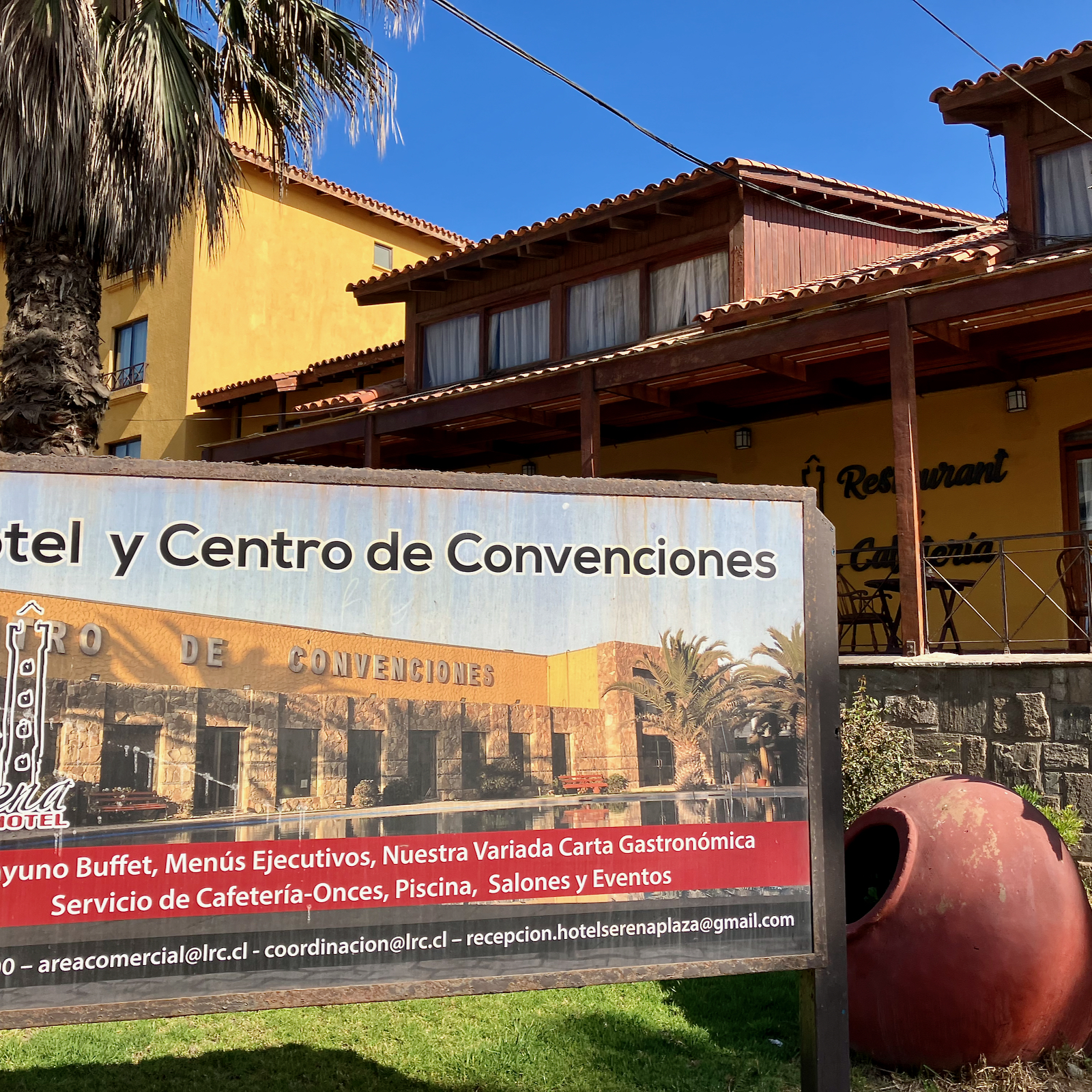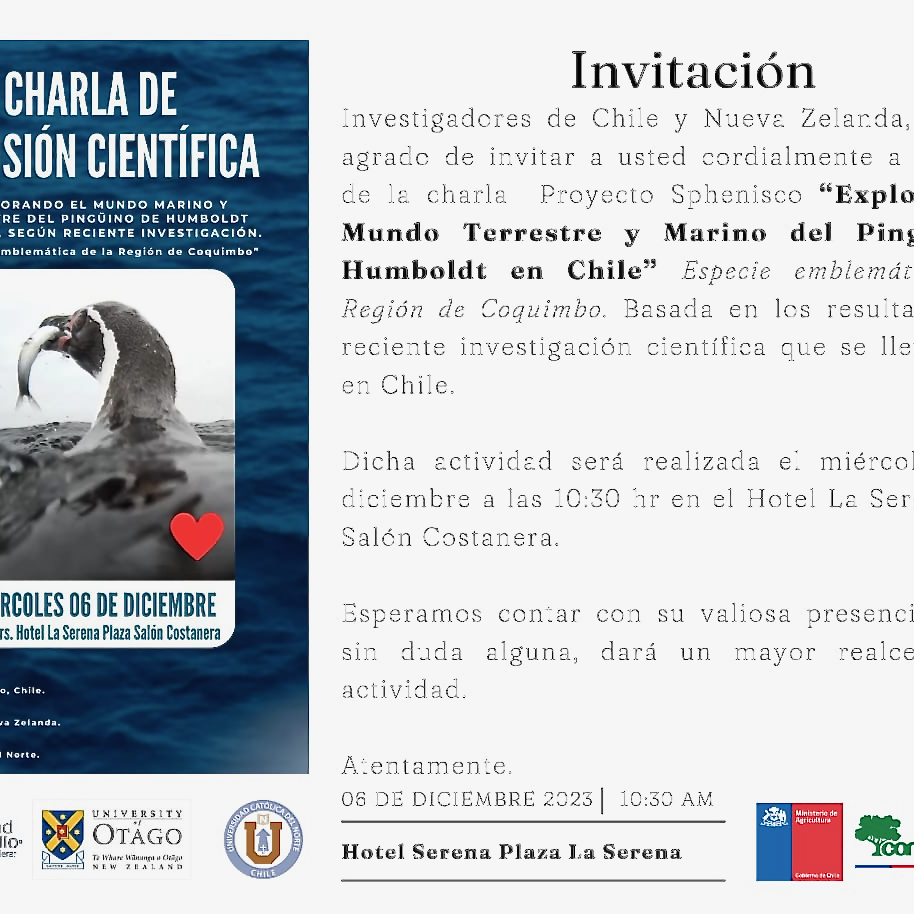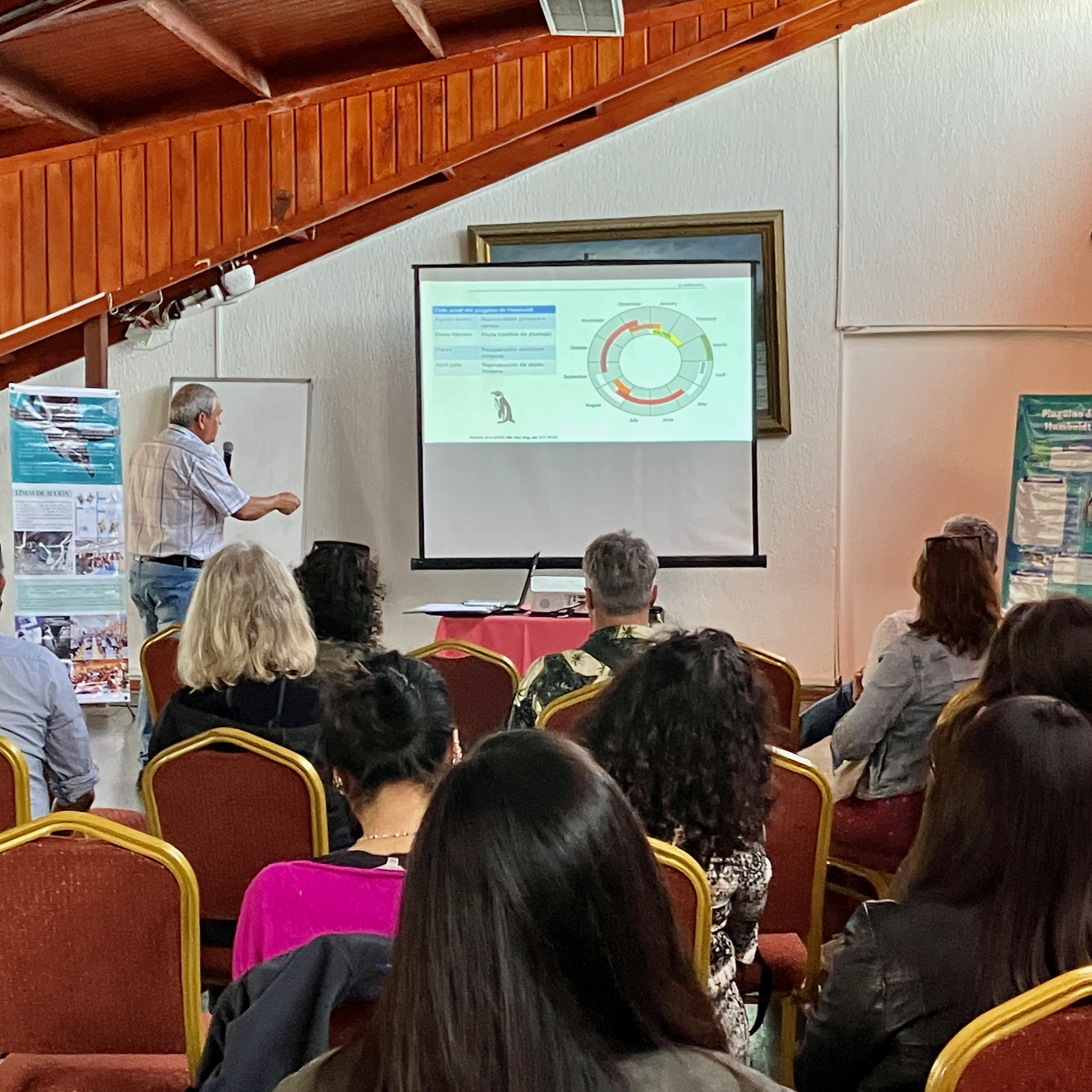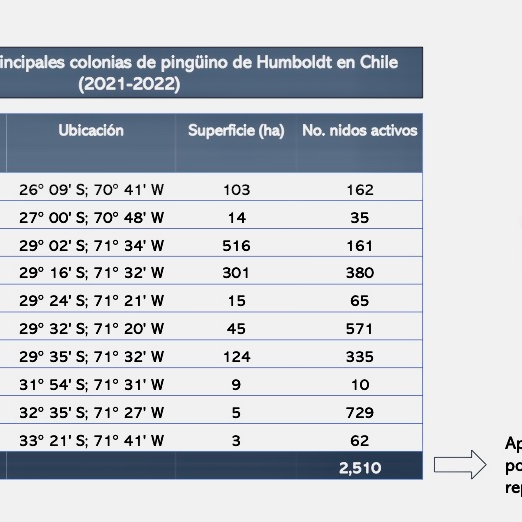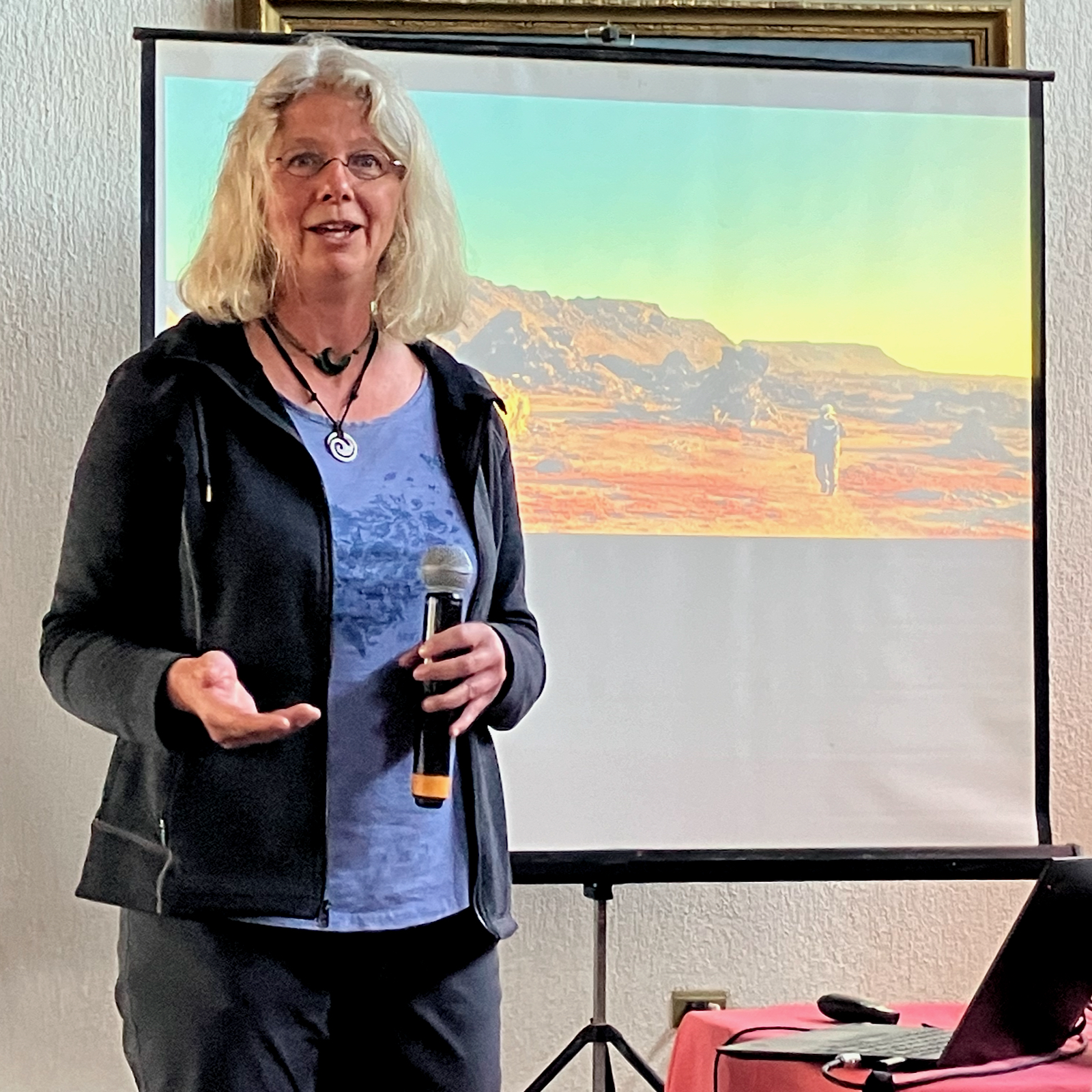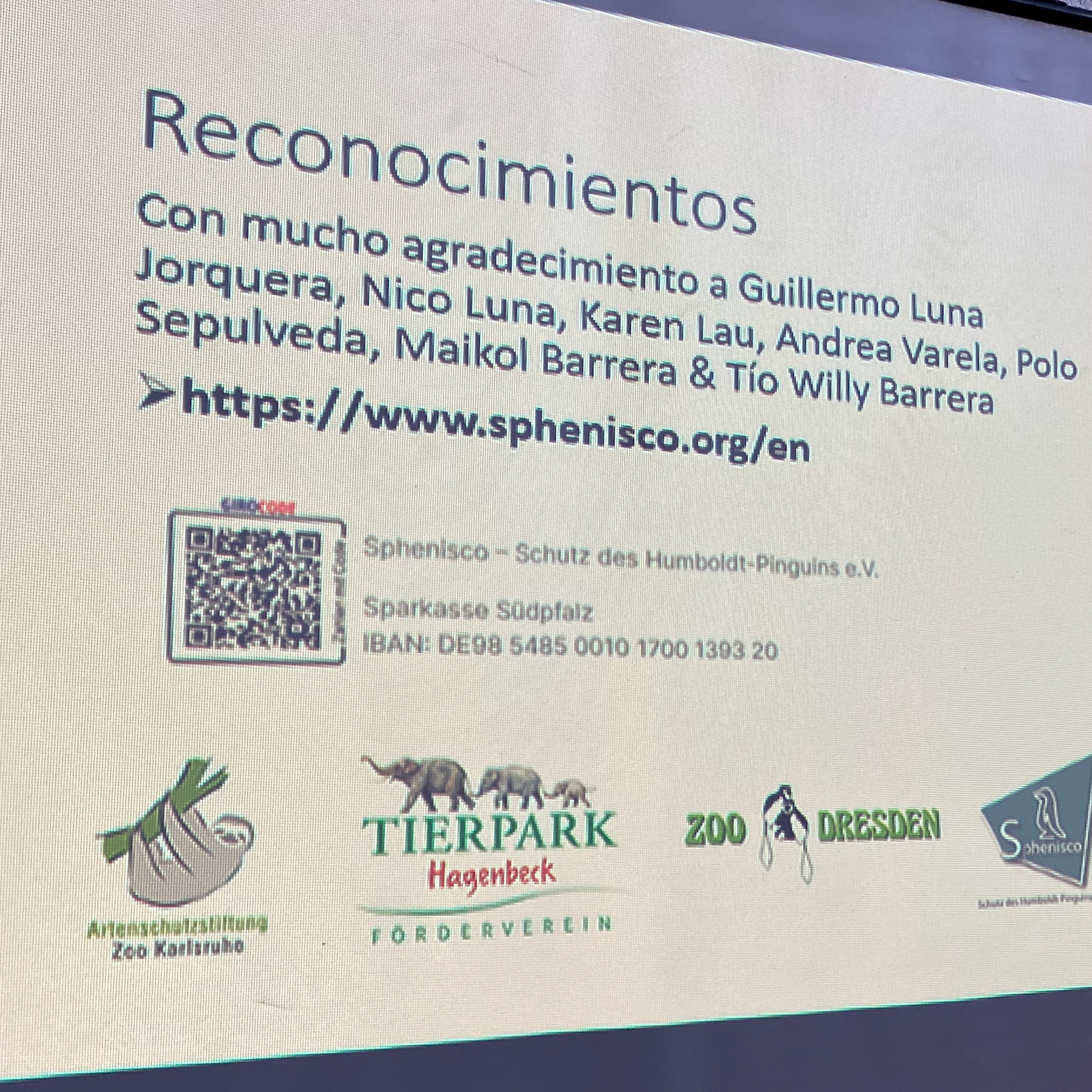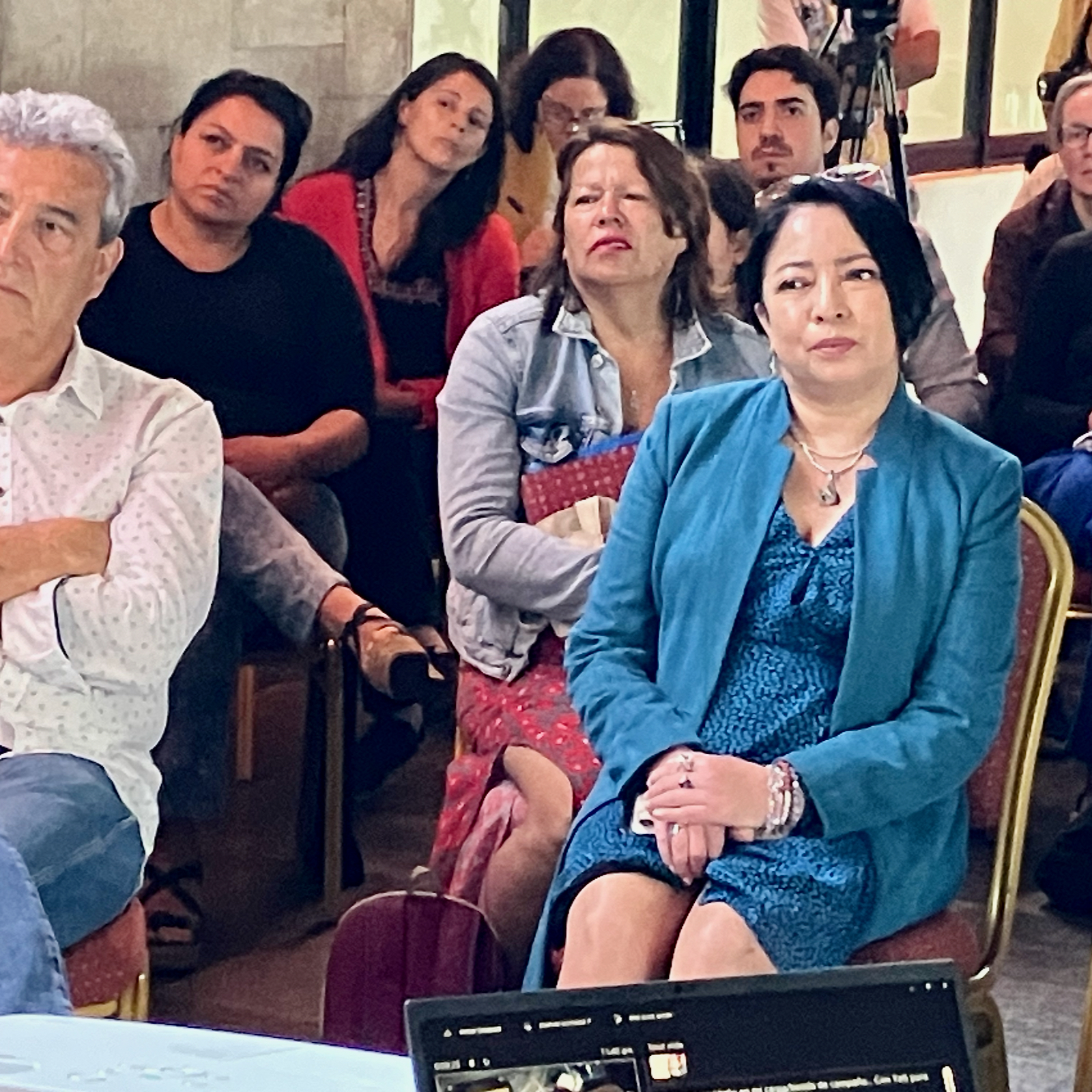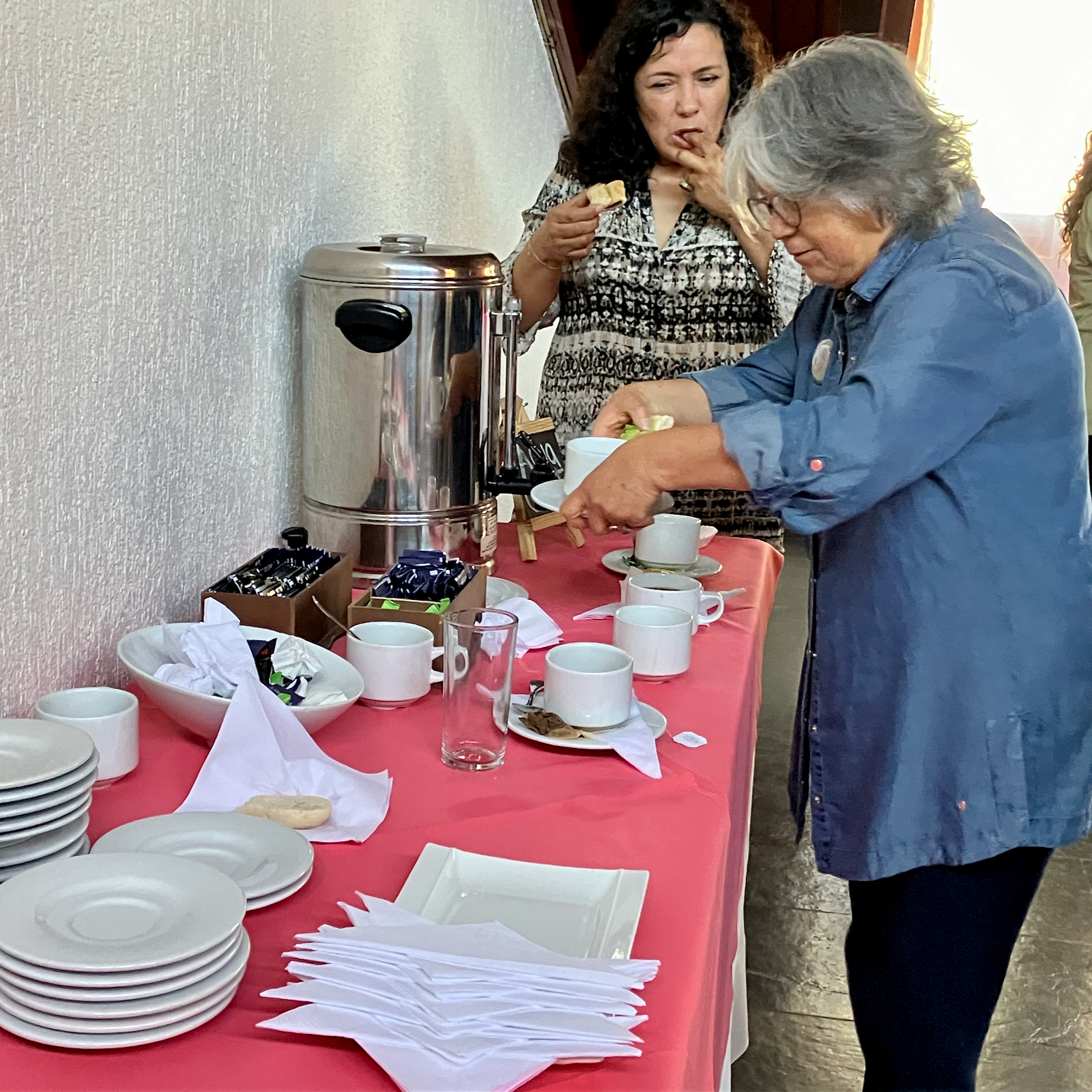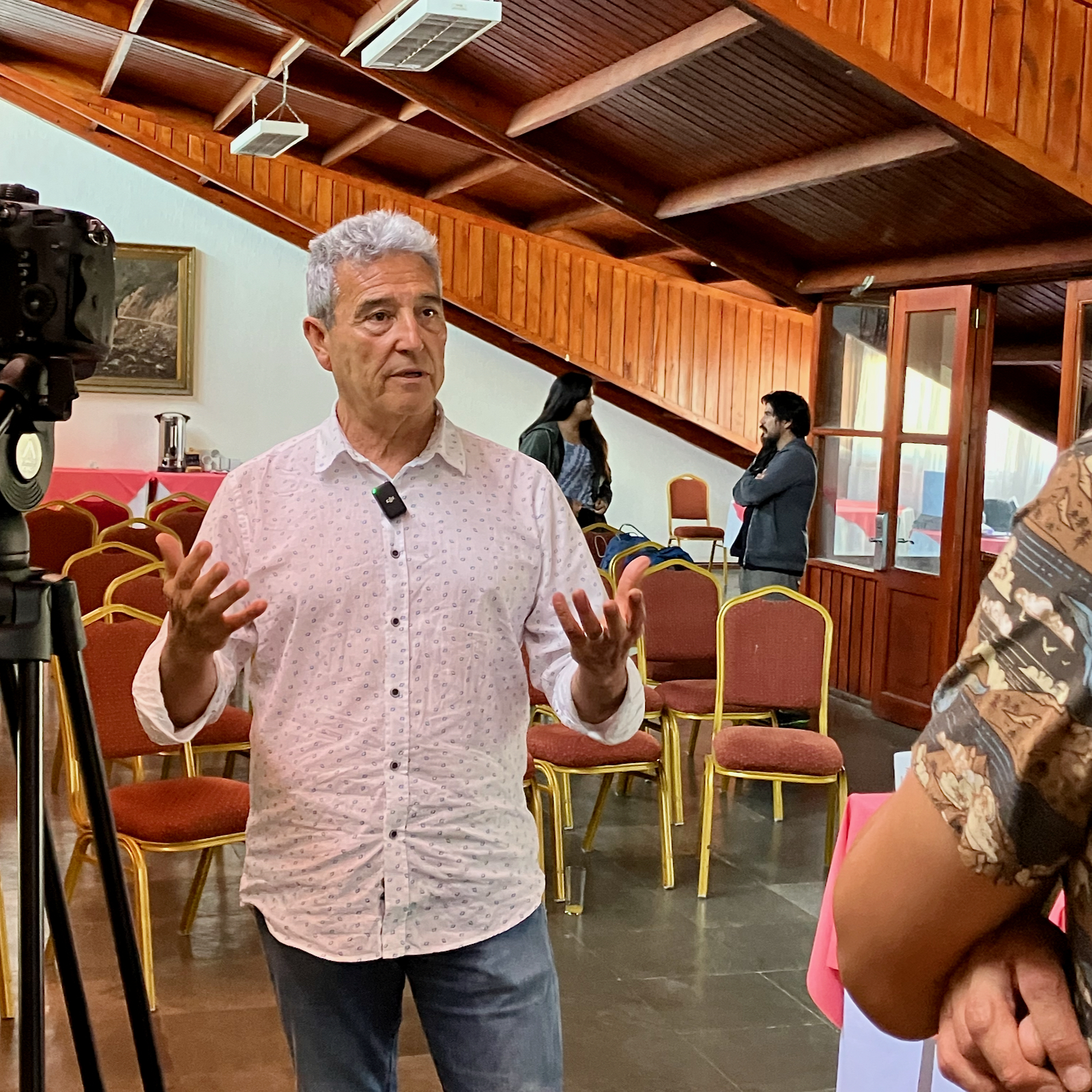Paracas, December 11, 2023. In the last two years, intensive research has been carried out on the Humboldt penguin on behalf of Sphenisco. The group led by Dr. Alejandro Simeone, University Andrés Bello, Santiago, carried out population counts on the most important Chilean breeding islands, another group led by Dr. Guillermo Luna, University of Católica del Norte, Coquimbo, monitored breeding success on the islands of Choros and Chañaral. In addition, the group led by Dr Thomas Mattern and Dr Ursula Ellenberg, NZ Penguin Initiative, University of Otago, Dunedin, investigated foraging. The extensive research project was funded by the Karlsruhe Zoo Species Conservation Foundation, Dresden Zoo and the Association of Friends of Hagenbeck Zoo e.V. (see "Projects Chile" June 4, 2021, November 28, 2021, April 18, 2022, July 22, 2022, July 23, 2023, January 1, 2023, July 9, 2023 and November 21, 2023 on these pages).
The research results were first reported at the World Penguin Conference in Viña del Mar, Chile, in September, and then at the beginning of December at the Consejo Consultivo de la Reserva Marina Choros Damas (1) in Pt. de Choros. On 6 December, the scientists and Sphenisco invited guests to the Hotel La Serena Plaza, to present the results to the public for the first time (2). Around 50 participants accepted the invitation. Surprisingly, the governor of the Coquimbo region, Krist Naranjo P., and a number of press representatives in her entourage also attended the event. In her welcoming address, the Governor emphasized the importance of research and mentioned that she had been committed to the "Humboldt Archipelago Protection Zone" since the beginning of her term of office.
Nancy Duman opened the meeting with a tribute to Gabriele Knauf: "Today we cannot begin this activity without paying tribute to Gabriele Knauf, the founder of Sphenisco and president from 2008 to 2023. It is thanks to her that we are able to carry out this activity today. In life, there are actions, situations that seem small and insignificant at the time, but over time turn into great initiatives. No one could have guessed what an annual pass for visits to the Landau Zoo, a gift from her husband, would lead to. During one of her visits, Gabriele discovered that penguins were born at the zoo and needed to be fed and cared for 24 hours a day. As a good German, she got involved and asked what was wrong with these penguins, where they came from and what their habits were. When she couldn't find any more answers, she called a scientist, an expert in Germany, and who answered? It turned out that it was Guillermo Luna, our academic here, who was doing his PhD in Germany at the time. After meeting him and his mentor, Gabriele and her husband went to Chile several times, to Pan de Azúcar and to Algarrobo. They collaborated with researchers and met Alejandro Simeone. At that time, they were supporting an organization in the south of Chile. One day in 2007, they received a call from Chilean scientists and the community of Punta de Choros asking for international support to save the Humboldt Penguin National Reserve and the entire Humboldt Archipelago. This was the birth of Sphenisco. Thank you very much, Gabriele."
Afterwards, Alejandro Simeone gave a lecture on "Exploring the marine and terrestrial world of the Humboldt penguins in Chile". He once again mentioned the goals of the 6-year research project:
1. To record the size of the Humboldt penguin population in Chile.
2. To determine the reproductive success on the islands of Choros and Chañaral and
3. to study the penguins’ behavior at sea.
Using the island of Choros as an example, Alejandro Simeone presented the evolution of the population from 2002 to 2023, then presented the number of breeding pairs for 10 Chilean islands in the period 2021 and 2022, a total of no more than 2,510 active nests, equivalent to 5,020 breeding individuals (see image).
Ursula Ellenberg's contribution was beautifully titled "Seeing the Sea Through the Eyes of Penguins". She began by describing the technique and procedure used by the research team to track the penguins at sea. She then depicted the paths of the individual birds in their search for food around the island of Choros. The penguins visited 2 "supermarkets", one near the coast southeast of the island and one west towards the open sea. The highlight of the lecture was a world premiere, with underwater shots of Humboldt penguins hunting individually or in groups. The participants were intrigued, including the governor. Also new were findings on the food spectrum, which Ursula Ellenberg presented. Humboldt penguins, for example, search groups of jellyfish for very small fish (3).
Last but not least, Guillermo Luna gave a lecture on "Monitoring the Breeding aActivities of the Humboldt Penguin in the Humboldt Penguin National Reserve". He first described the global development of the threat to bird species and showed that the Humboldt penguins are among the most affected seabirds. On the basis of expected quotas, he showed that in the 2021-2022 season, the breeding success (= birds that have fledged) was 0.8 on the island of Choros and 0.6 on the island of Chañaral (4).
All contributions led to intensive, detailed and very lively discussions.
After 3 hours in the world of research, Werner Knauf thanked the researchers: "At a time when there is a danger that fake news will gain the upper hand, the slogan of Fridays for Future "Listen to the science!" is particularly important. Science can also be wrong, but in science the principle applies that you have to prove your theses;
the opposite of populism." He pointed out that the Humboldt Archipelago is an ecosystem of global importance for the preservation of biodiversity. Therefore, the dissemination of the presented results is eminently important. He asked the participants to help publicize the results.
W.K.
translated from Erich Greiner
Note.
(1) Advisory Board of the Choros Damas Marine Protected Area.
(2) The event as well as interviews with researchers and officials were recorded. The film recordings will be published on "Alianza Humboldt facebook".
https://www.facebook.com/people/Alianza-Humboldt-Coquimbo-Atacama/100076325935427/
(3) Ursula Ellenberg and Thomas Mattern are planning to publish more videos of the underwater recordings in the near future. Sphenisco will point this out.
(4) In the final report, Alejandro Simeone gave other figures: 1.43 fledged juveniles on the island of Choros and 1.03 on the island of Chañaral. The difference to Guillermo Luna's data can be explained by different calculation methods. Alejandro Simeone has calculated the total number of chicks at the end of the season divided by the number of nests and thus the average per island. Guillermo Luna calculated the breeding success per nest and used it to calculate the average for all nests on the respective island.



